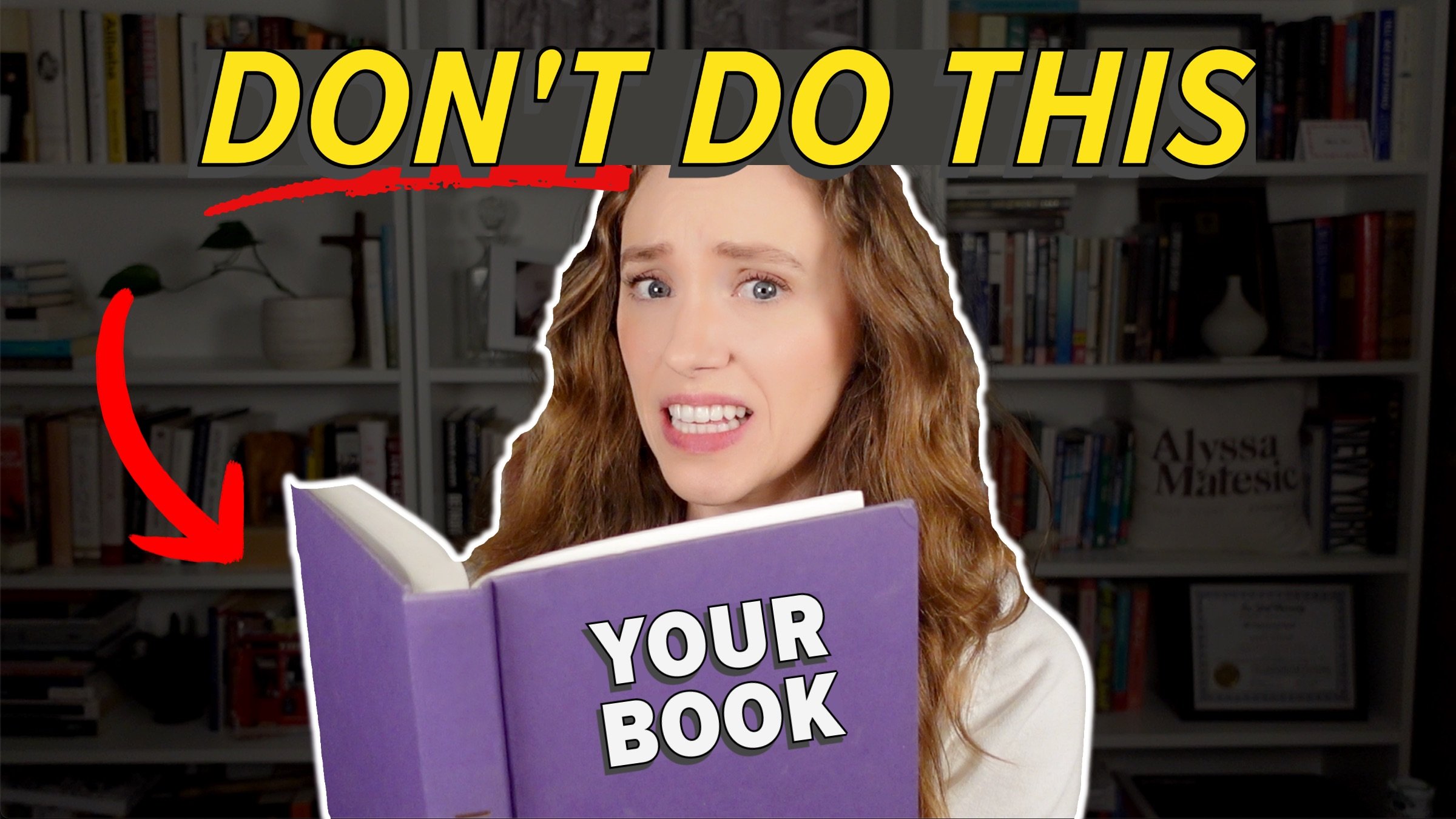How to Write a Great Scene Every Single Time
HIT PLAY OR READ THE POST BELOW:
What’s the secret to crafting the perfect scene? If you struggle with scenes that feel rushed, boring, or underdeveloped, this framework is going to forever change the way you write. I'm a book editor who has worked with best-selling authors at Penguin Random House, and this quality is what separates a powerful, strong scene from one that I know needs further work.
Crafting great scenes boils down to mastering the balance of action, dialogue, and narrative. Most writers naturally lean more heavily into one of these elements while neglecting the others, which results in scenes that lack depth, feel slow, or fail to keep the reader engaged. Masters of the craft know how and when to use each of these narrative modes to write scenes that are swift, engaging, and leave the reader wanting more.
So let's break down exactly how to use action, dialogue, and narrative to write the perfect scene—and we're going to workshop a sample passage together to illustrate this in action.
Action
The first pillar of every strong scene is the most obvious, but it’s also frequently neglected, which leads to static, boring moments: action.
Action keeps the story moving, allowing us to visualize what the characters are doing and understand how the plot is progressing. It ensures that the story continually moves forward, propelling the characters along their journey.
You might think you have enough action in your scene, but having your character stare out a car window while reflecting on a ten-page flashback isn’t necessarily the most engaging way to deliver information. By the end of a scene like that, the reader may feel like nothing has actually happened and that there has been no meaningful plot progression.
On the flip side, if your scene is too action-heavy at the expense of dialogue and narrative, you’ll run into a different problem. Let’s look at an example:
I blow on the surface of my coffee and watch a woman clad in a hot pink snowsuit topple to the ground, skis akimbo. I tighten the plush robe around me and set my mug on the hotel room windowsill. Mason rolls over in bed with a groan and reaches for his phone. He grumbles about his employee Grant not making the edits to the pitch deck and picks up his phone to call him, even though it’s 3:00 a.m. in New York. I take another sip of coffee.
Here, we can visualize what’s happening, but the scene ultimately lacks impact because it’s all action and nothing else. There are no moments of narrative reflection to reveal the narrator's emotions, no exposition to give us background on the characters, and no dialogue to show their interactions in real time. As a result, we feel distanced from the narrator and don't fully understand what’s going through her mind. Without that, it’s hard to be emotionally invested in the scene.
Dialogue
The passage would feel more balanced with additional moments of dialogue and narrative. Let’s try dialogue first:
“Wow, look over there,” I say. “That woman in the pink snowsuit just toppled over—her skis are up in the air.”
“I’m more concerned with that idiot Grant,” Mason says. “He didn’t make the edits to the pitch deck I sent last night.”
“I thought we muted our work emails. Also, isn’t it 3:00 a.m. in New York?”
“Yeah, but he got them at 7:00 p.m., so he had plenty of time to make the changes.”
Because there’s no action in this version, we have to rely on the dialogue to figure out where the characters are and what’s happening. As a result, the scene feels disconnected from the physical setting. The first line of dialogue awkwardly describes what the narrator is seeing, which would be more effectively conveyed through action. Additionally, without any moments of narrative reflection, it’s hard to latch onto what’s significant about the conversation. The dialogue feels like it’s happening in a vacuum, making it harder to engage with the characters. This is an extreme example, but if your manuscript contains lengthy dialogue exchanges with little action or narrative, your scenes might feel placeless, causing the reader to disengage.
Narrative
Action and narrative provide the necessary context that allows dialogue to land with the intended emotional weight. Let’s see what happens if we rely only on narrative:
I’d much rather stay here in the hotel room than ski on the mountain today, but I’m not sure I have a choice. Mason booked the most expensive suite at the resort, complete with a view of the main chairlift, a wood-burning fireplace, and a dedicated 24/7 concierge. I would have been fine with a standard guest room, but he insisted on doing our honeymoon right. To Mason, “doing things right” typically meant spending more money.
I think back to last night when I questioned his late-night email to his employee, Grant. He had sent Grant a laundry list of edits to make to their pitch deck, even though it was past 7:00 p.m. in New York. He told me I didn’t understand the high standards he held for his team—that he pays them to be available 24/7.
This passage is dominated by internal reflection and flashback. While we get the narrator’s emotions and some backstory, there is no action or dialogue to ground us in what’s happening physically. As a result, it’s difficult to know where the character is and what’s unfolding in the present moment. If the narrative continues in this way, the reader may feel disoriented and detached from the actual story.
Finding The Right Balance
Now that we know what not to do, let’s look at a more balanced version that incorporates all three elements: action, dialogue, and narrative.
I blow on the surface of my coffee and watch a woman clad in a hot pink snowsuit topple to the ground, skis akimbo. As I tighten the plush robe around me and set my mug on the windowsill, my stomach turns. I’d much rather stay up here, toasty and upright.
Mason got us the most expensive suite at the resort, complete with a view of the main chairlift, a wood-burning fireplace, and a dedicated 24/7 concierge. I would have been fine with a standard guest room, but he insisted on doing our honeymoon right. To Mason, “doing things right” typically meant spending more money.
Nude except for his boxers, he rolls over in bed with a groan and reaches for his phone.
“That idiot,” he mutters. “Grant didn’t make the edits to the pitch deck I sent last night.”
“I thought we muted our work emails. Also, isn’t it 3:00 a.m. in New York?”
I take another sip of coffee, trying to settle my stomach.
“Yeah, but he got them at 7:00 p.m., so he had plenty of time to make the changes.”
I learned early on that being in Mason’s life meant accommodating his schedule. You wouldn’t understand, he had said the first time I questioned his late-night requests. I pay them to be on 24/7.
In this version, action grounds us in the setting, dialogue gives us insight into the characters' dynamics, and narrative provides emotional depth and backstory. The result is a strong scene that is engaging, fluid, and layered.
Troubleshooting Your Scenes: A Quick Fix Guide
If you're still struggling with this balance, here’s a quick cheat sheet to write better scenes:
If your scene feels too slow, add more action or dialogue to break up long passages of narrative.
If your scene feels rushed or thin, add more narrative to give it emotional depth.
If your scene feels placeless, add more action to ground the reader in the physical setting.
Thanks for reading, and happy writing!






